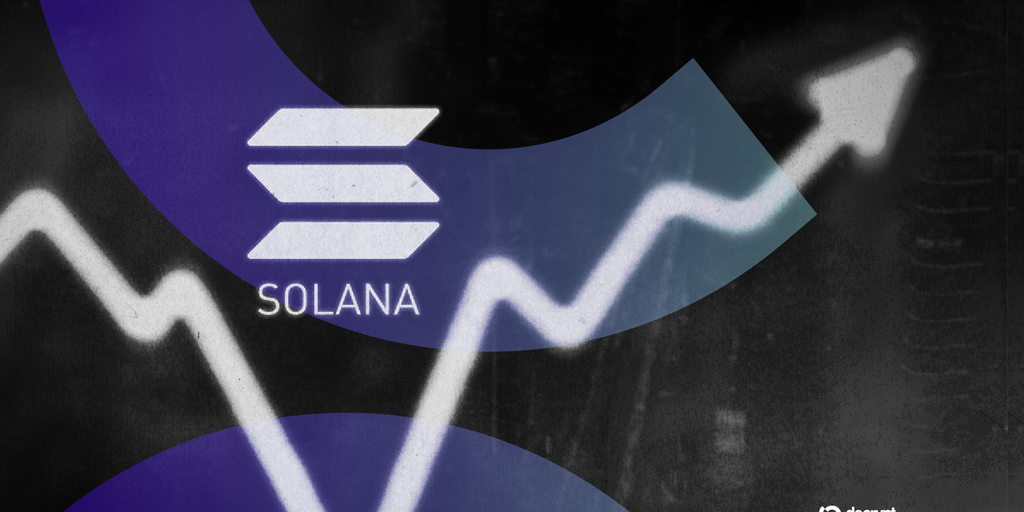In brief
- A Solana validator processed blocks with greater than 100,000 transactions per second in an experiment.
- The performance improvement was more than 25x the typical throughput of the Solana mainnet.
- Key Solana backers suggest that it means the network is ready for much more.
The Solana network briefly processed more than 100,000 transactions per second (TPS) in an on-chain experiment Sunday. That’s more than 25 times the network’s typical throughput, according to data gathered by the network’s explorer.
Solana already massively outpaces O.G. blockchain networks like Bitcoin and Ethereum on that front, but the Sunday peak beats Visa’s own high mark of handling up to 65,000 transactions per second.
The Solana validator operator behind the feat said that it showcases what’s possible if continued technical developments and efficiency improvements make their way to the popular layer-1 blockchain.
“The main point I want to get across is that Solana needs more efficient programs and an efficient token standard,” pseudonymous validator Dr. Cavey PHD told Decrypt.
The rest of the network struggled very little to replay these blocks, and the subsequent leader produced their blocks normally.
This is a significant milestone not only for the network of over 1000 validators, but for distributed systems.
— dr cavey phd ⏳ (@cavemanloverboy) August 17, 2025
Cavey’s validator achieved a peak of 104,529 TPS on Sunday in what they called an experiment conducted on a “whim.”
However, unlike a typical Solana block filled with transactions like token swaps or meme coin launches, the experimental blocks instead were filled with “votes, a few normal transactions, and a significant number of ‘no-op’ transactions,” or those that don’t require much computation.
Nevertheless, if extrapolated out and handled with more efficient programs and token standards, Cavey believes the network could process approximately 100,000 token transfers per second—or 10,000-20,000 swaps in its current state.
With such programs and token standards in place, they said, Solana can become the foundational infrastructure for on-chain markets that it aims to be.
“High capacity enables the world’s markets to all be on-chain,” said Cavey. “Without the capacity, we can only ever hope to support a handful.”
Solana’s real-time throughput is around 3,600 TPS at present time, according to the block explorer on Solana.com. For comparison, competing network Ethereum’s real-time mark is around 20.7 TPS, according to data from Etherscan—around 170 times slower than Solana.
Why is it so important that Solana can achieve 100,000 TPS?
“It’s important insofar as it demonstrates that the network can clearly scale over an order of magnitude more than the current utilization, which is already several orders of magnitude over most blockchains,” Multicoin Capital Managing Partner Kyle Samani told Decrypt. “It means that Solana is ready to support web-scale applications today.”
“This enables more activity to come on-chain,” Mert Mumtax, CEO of Solana infrastructure firm Helius Labs, told Decrypt. “More finance, more oracle updates, more market-making, etc. And of course: lower fees for users.”
Developers too stand to gain, according to Samani, who added that major throughput gains “opens up an entirely new design space for transaction-heavy applications.”
In July, a blog post authored by leading Solana stakeholders (including Samani) outlined a technical roadmap designed to make Solana the home of the world’s best financial markets, with improvements scheduled regularly for the next few years.
But according to Cavey, major throughput improvements like those showcased in their experiment could be here even sooner.
“Three months at best,” the validator said, “six months at worst.”
Daily Debrief Newsletter
Start every day with the top news stories right now, plus original features, a podcast, videos and more.







